The age of Homo naledi and associated sediments in the Rising Star Cave, South Africa
- PMID: 28483040
- PMCID: PMC5423772
- DOI: 10.7554/eLife.24231
The age of Homo naledi and associated sediments in the Rising Star Cave, South Africa
Abstract
New ages for flowstone, sediments and fossil bones from the Dinaledi Chamber are presented. We combined optically stimulated luminescence dating of sediments with U-Th and palaeomagnetic analyses of flowstones to establish that all sediments containing Homo naledi fossils can be allocated to a single stratigraphic entity (sub-unit 3b), interpreted to be deposited between 236 ka and 414 ka. This result has been confirmed independently by dating three H. naledi teeth with combined U-series and electron spin resonance (US-ESR) dating. Two dating scenarios for the fossils were tested by varying the assumed levels of 222Rn loss in the encasing sediments: a maximum age scenario provides an average age for the two least altered fossil teeth of 253 +82/-70 ka, whilst a minimum age scenario yields an average age of 200 +70/-61 ka. We consider the maximum age scenario to more closely reflect conditions in the cave, and therefore, the true age of the fossils. By combining the US-ESR maximum age estimate obtained from the teeth, with the U-Th age for the oldest flowstone overlying Homo naledi fossils, we have constrained the depositional age of Homo naledi to a period between 236 ka and 335 ka. These age results demonstrate that a morphologically primitive hominin, Homo naledi, survived into the later parts of the Pleistocene in Africa, and indicate a much younger age for the Homo naledi fossils than have previously been hypothesized based on their morphology.
Keywords: Dinaledi Chamber; Homo naledi; Pleistocene; dating; evolutionary biology; genomics; hominin; none; paleoanthropology.
Conflict of interest statement
The authors declare that no competing interests exist.
Figures
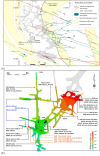
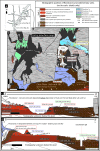



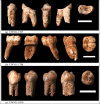
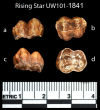
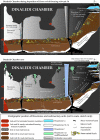
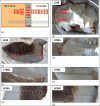



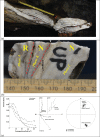

Comment in
-
New opportunities rising.Elife. 2017 May 9;6:e26775. doi: 10.7554/eLife.26775. Elife. 2017. PMID: 28483038 Free PMC article.
References
-
- Adamiec G, Aitken MJ. Dose rate conversion factors: update. Ancient- TL. 1998;16:37–49.
-
- Aitken MJ. Thermoluminescence Dating. London: Academic Press; 1985. p. 359.
-
- Barbouti AI, Rastin BC. A study of the absolute intensity of muons at sea level and under various thicknesses of absorber. Journal of Physics G: Nuclear Physics. 1983;9:1577–1595. doi: 10.1088/0305-4616/9/12/018. - DOI
-
- Berger LR, Hawks J, de Ruiter DJ, Churchill SE, Schmid P, Delezene LK, Kivell TL, Garvin HM, Williams SA, DeSilva JM, Skinner MM, Musiba CM, Cameron N, Holliday TW, Harcourt-Smith W, Ackermann RR, Bastir M, Bogin B, Bolter D, Brophy J, Cofran ZD, Congdon KA, Deane AS, Dembo M, Drapeau M, Elliott MC, Feuerriegel EM, Garcia-Martinez D, Green DJ, Gurtov A, Irish JD, Kruger A, Laird MF, Marchi D, Meyer MR, Nalla S, Negash EW, Orr CM, Radovcic D, Schroeder L, Scott JE, Throckmorton Z, Tocheri MW, VanSickle C, Walker CS, Wei P, Zipfel B. Homo naledi , a new species of the genus Homo from the Dinaledi Chamber, South Africa. eLife. 2015;4:e09560. doi: 10.7554/eLife.09560. - DOI - PMC - PubMed
Publication types
MeSH terms
LinkOut - more resources
Full Text Sources
Other Literature Sources
Miscellaneous

